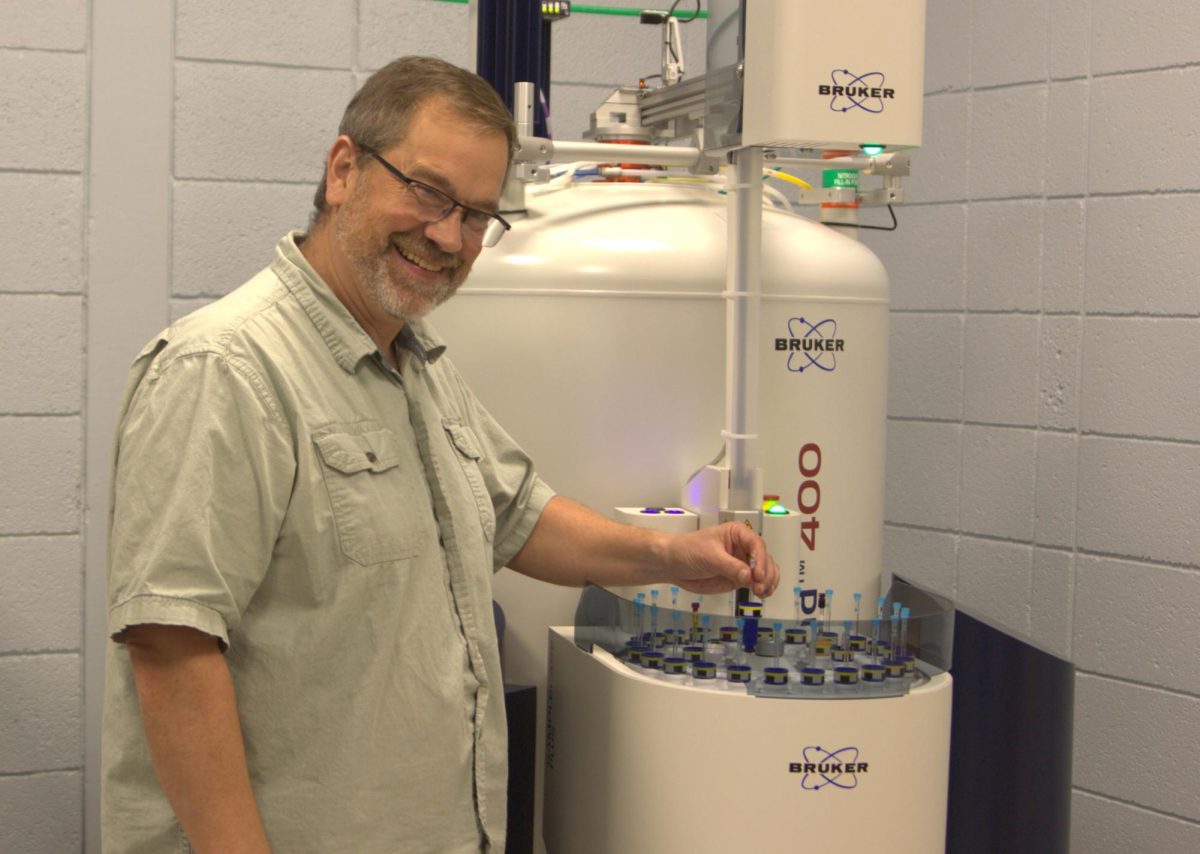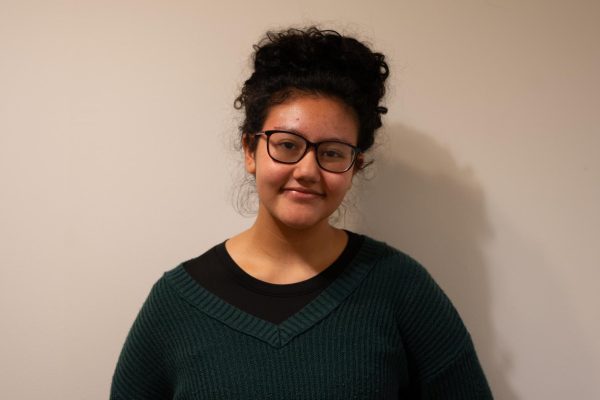Grinnell’s chemistry department acquired a new nuclear magnetic resonance (NMR) spectrometer and revamped its room during the summer of 2023. The previous instrument was purchased in 2000, and after a series of breakages, a replacement with better capabilities arrived. The instrument was purchased for just under $600,000 and was funded by the National Science Foundation’s Major Research Instrumentation program (CHE-2216273) and the Roy J. Carver Trust.
An NMR spectrometer uses a powerful magnetic field to analyze molecular structure. Thomas Andrew Mobley, professor of chemistry, said, “This is the chemist’s version of an MRI.” The machine consists of a computer, a console and a superconducting magnet. It measures the interaction of nuclei within molecules with a magnetic field in order to determine the structure of the molecule. NMR machines are used in many branches of chemistry, and at Grinnell are used by organic, physical, biological, advanced organic and advanced inorganic chemistry classes, said Mobley.
The College’s previous machine did not reliably produce quality results, said Hieu Nguyen `24, chemistry SEPC member. He described his experience using the old instrument, and the method he developed to “trick the machine” into giving him easily readable and accurate results.
Additionally, Mobley said that as a result of the age of the machine, when things would break down, it would be a more difficult process to fix them. The room the instrument is housed in was also remodeled, as it previously contained asbestos, said Nguyen.
This is the chemist’s version of an MRI.
— Thomas Andrew Mobley
However, rumors that the old machine exploded are untrue. Mobley said that though some believed it was an explosion, an unplanned quench in 2014 is actually to blame. This occurs when the liquid helium coating the superconducting magnet is boiled off and done sometimes on purpose to stop the magnetism.
Since this was unplanned and the excess energy had to be released somewhere, a piece of the machine blew off and broke a light in the room, said Mobley. Perhaps an explosion in some way, he said, but not quite as dramatic as the word suggests.
The new instrument is an upgrade, with all of the same basic capabilities of the original one –– just better, said Mobley, as a result of new technological developments over the years. Most classes in the chemistry major use this instrument, he said, and the upgrade should make things run smoother, both in classwork and for student researchers.
One aspect of the new instrument Mobley mentioned was the new sample changer, which used to be on top of the machine but is now at about hip height, which addresses accessibility and safety issues with use of the instrument. Further, Nguyen said that it opens greater opportunities for student research, because a higher quality instrument will likely produce research or publication quality results.
The nearly $600,000 instrument was purchased through two grants that were a department-wide effort, with Mobley acting as the principal writer. One grant, the National Science Foundation’s Major Research Instrumentation program (CHE-2216273), covered about two-thirds of the cost, and the other, the Roy J. Carver Trust, gave around $195,000. The final grant proposal was the fourth iteration of the department’s effort, with the first application submitted in 2013.
Update: This article has been updated to include the award number of the grant that was used to purchase the NMR machine.































































